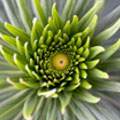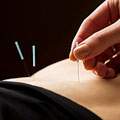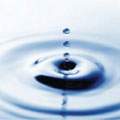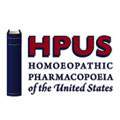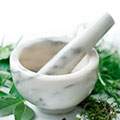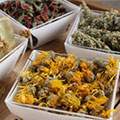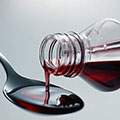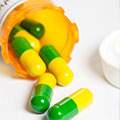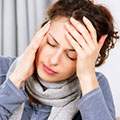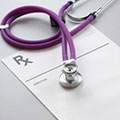Homeopathy
How Homeopathic products work
Similasan products stimulate the body’s natural defenses by utilizing microdilutions of natural active ingredients.
In the production of homeopathic medicines, natural active ingredients (originating from mineral, plants or animals) undergo a process of serial dilution. This simply means that we create a very weak dilution, or a microdilution of the ingredient. Technically, a solution’s concentration is represented by an “X”. For example, an ingredient diluted to the level of 6X contains 0.000001% of the active ingredient. This homeopathic mode of action is similar in theory to a conventional allergy or flu shot, yet the natural active ingredients in homeopathic products are much more diluted.
We’re often asked why some ingredients, such as apis (honey bee), belladonna and mercurius are used. After all, these substances can trigger significant reactions when used in strong concentrations. In homeopathy, however, the dosages are not concentrated enough to poison the body. The body triggers the immune system to react to the underlying problem. For example, a microdilution of honey bee will trigger the body to fight symptoms such as burning, stinging and swelling, which are in many cases the symptoms of allergy.
In summary, homeopathy is a completely unique way of treating ailments. Rather than imposing a chemical drug on the body with the hope of temporarily masking symptoms, homeopathic natural active ingredients attempt to stimulate a physiological reaction of the body’s healing mechanisms. In other words, homeopathy encourages the body to maintain proper health by imposing a gentle stimulus, and letting your system do the rest.
History of Homeopathy
Homeopathy is derived from the Greek words homeo, meaning similar, and pathos, meaning suffering. The principle of homeopathy is based on the Law of Similars. It was Dr. Samuel Hahnemann who discovered the benefits of homeopathy. He pioneered the dilution process still used by all homeopathic formulators. Today, after 200 years of homeopathic drug proving, there is a basis or “pathogenesis” that each formulator and homeopathic practitioner follows when diagnosing and treating patients.
Dr Samuel Hahnemann: the Father of Homeopathic Medicine
Samuel Hahnemann developed the homeopathic approach to medicine more than 200 years ago. Hahnemann was awarded his doctorate in medicine from the University of Erlangen, Germany in 1779. After practicing medicine for 5 years, he found that conventional medicine at the time was invasive, riddled with side effects, and often did more harm than good. He wanted to develop a system that would serve as a gentle first line of defense.
After reading a 20-page dissertation describing the use of cinchona bark to treat malaria, Hahnemann experimented with this ingredient. To his surprise, he found that cinchona bark actually caused malaria symptoms when taken in large doses. He then hypothesized that cinchona was effective in helping treat malaria due to its ability to cause these symptoms. In subsequent treatments on people suffering from malaria, he confirmed that while cinchona helped, it was very harsh and caused other difficulties. Hahnemann found that diluting the cinchona eliminated its harsh side effects while maintaining its beneficial healing effects.
Hahnemann then had a brilliant idea: to progressively dilute the substances and to mix or grind the dilution in each stage of concentration.
Homeopathy Today
Stemming from Hahnemann’s experiments, homeopathy went on to become a form of medical treatment used by physicians worldwide. In the U.S. homeopathy was widely practiced in hospitals in the 19th and early 20th centuries. As recently as 1998, the World Health Organization recognized homeopathy as one of the systems of traditional medicine that should be integrated with conventional medicine to ensure adequate health care*. In the U.S. today, there are hundreds of homeopathic OTC products found in drug stores, grocery stores, health food stores and mass merchandisers.
* Brinkaus, B, Schindler, G, Linder M, et al. Socioeconomic aspects of homeopathy as seen by decision-makers and service providers in the health care system. In Ernst E, Hahn E. Homeopathy; A Critical Appraisal. Butterworth-Heinemann, Oxford, UK, 1998; 221-233
Homeopathic.org – National Center for Homeopathy. Learn more about homeopathy and find a homeopathic physician near you.
HPUS.com – The Homeopathic Pharmacopoeia Convention of the United States. This is the convention responsible for the production and updating of the Homeopathic Pharmacopoeia of the United States (HPUS), which is the FDA’s officially recognized compendium of homeopathic ingredients.
AAHP – The AAHP is an alliance of homeopathic product manufacturers, importers and exporters. All AAHP members manufacture and/or sell homeopathic drugs in the United States.
CDC.gov – for health information from the Department of Health and Human Services and the Centers for Disease Control and Prevention.
We recommend What Everyone Should Know and Do regarding antibiotic resistance and the dangers of antibiotic overuse.
Homeopathic Glossary
Active ingredient
An active ingredient is one that is intended to directly affect symptoms of ailments. Active ingredients are how natural relief works to help quiet a cough, soothe a sore throat or nasal passage, comfort an achy ear, relieve red and burning eyes, or alleviate other symptoms.
Complementary & Alternative Medicine (CAM)
Complementary and alternative medicine, also known as CAM, is often used by a growing number of American families in pursuit of health and well-being. Examples of CAM include homeopathic natural relief, probiotics, dietary supplements, acupuncture, meditation, and yoga.
- Complementary medicine, such as a natural remedy, is used together with a traditional medicine. For example, natural ear drops are administered in addition to a prescription medicine to help relieve certain ear problems.
- Alternative medicine, such as a natural remedy, is used in place of a traditional medicine. For example, natural ear drops may be administered to help temporarily relieve ear symptoms instead of a prescription or over-the-counter medicine.
Dilution
A dilution is a very small quantity of an active ingredient. Weak dilutions are how homeopathic natural relief works to help support the immune system and temporarily relieve symptoms.
Homeopathic Pharmacopeia of the United States (HPUS)
Homeopathic Pharmacopoeia of the United States (HPUS) is a reference used to identify established homeopathic ingredients.
Homeopathic remedy
Any remedy that’s labeled “homeopathic” must contain active ingredients recognized by the Homeopathic Pharmacopoeia of the United States (HPUS). Remedies containing homeopathic ingredients combined with non-homeopathic active ingredients are not considered homeopathic remedies.
Homeopathy
Homeopathy (pronounced home-ee-ah-pathy) uses very small doses of substances (i.e., plants, flowers, and minerals) to help support healing responses in the body. Homeopathy is based on the “Law of Similars,” the principle that you can treat “like with like.” For example, a natural allergy relief remedy uses a tiny amount of the allergen (e.g., pollen) to help the body naturally counteract symptoms on its own — instead of masking the symptoms.
Homeopathy is an acceptable complementary treatment for managing symptoms. In fact, homeopathic medicines are used by approximately 200 million adults and children worldwide.1
Over-The-Counter (OTC) medicine
An over-the-counter medicine is a non-prescription medicine. Over-the-counter means it can be sold without a doctor’s authorization. However, many natural relief products are sold in stores in the over-the-counter drug section, too. Some stores have separate ‘health’ sections that sell natural relief.
Prescription medicine
Prescription medicine requires a medical doctor’s authorization to purchase. A prescription drug can be referred to as traditional medicine. Homeopathic remedies are not prescription medicines.
Side effect
A side effect happens when a medicine causes a secondary, and potentially adverse, effect. Similasan remedies have low risks of side effects.
Traditional medicine
Traditional medicine may be sold over-the-counter or by prescription.
